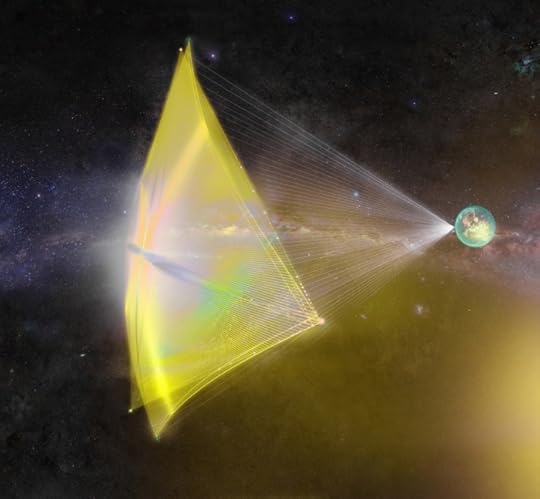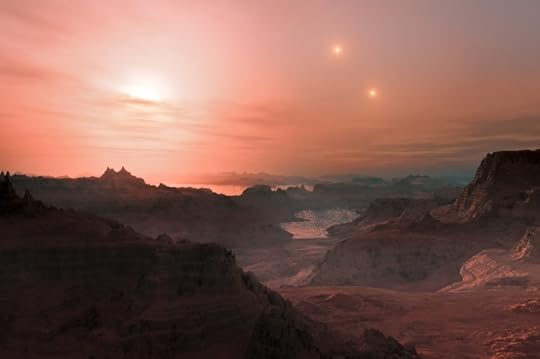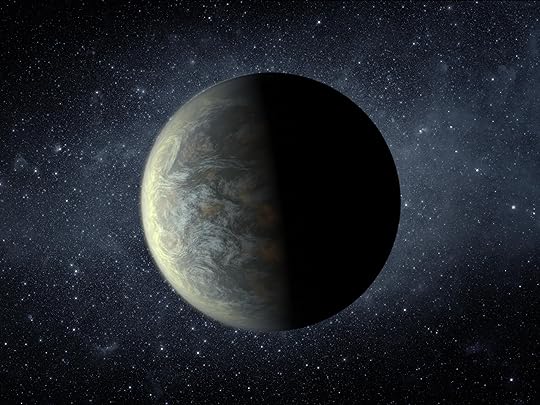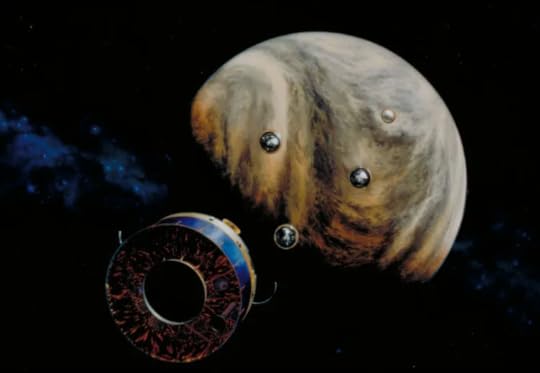Matthew S. Williams's Blog, page 8
August 22, 2023
Episode 50 – “The Relativity Revolution: The Life and Times of Albert Einstein – Part I” – is now Live!
This week’s episode was a doozy! Not only did I get into the big man himself – Albert Einstein – I also attempted to explain how Relativity works. Only this time, I used grown-up science-y terms and tried extra hard to explain how he arrived at it. To do that, I also had to explain all the scientists he drew inspiration from arrived at theirs! And to think, I only got to the halfway mark in his life and didn’t even cover the years when he was a refugee and his involvement in the Manhattan Project.
All that will be the subject of Part II, as well as the legacy he left in his wake. Check out Part I by following the links below. And please, let me know if I explained it in a way that made sense to you. As Einstein is often quoted as saying, “If you can’t explain it to a six-year-old, you don’t understand it yourself.” That’s a pretty high bar, but it’s a challenge I accepted. Please let me know how I did.
Where to Listen:
Simplecast Apple Podcasts Spotify Amazon MusicAugust 13, 2023
Episode 49 – “Where is Everybody?” Our Interstellar Future with Prof. Avi Loeb – is now live!
This week I sat down with Israeli-American theoretical physicist Professor Avi Loeb, the Frank B. Baird Jr. Professor of Science at Harvard University, the longest-serving Chair of the Department of Astronomy, the founder of Harvard’s Black Hole Initiative (BHI), and director of the Institute for Theory and Computation (ITC) at the Harvard-Smithsonian Center for Astrophysics. He is also the founder of the Galileo Project, a public project dedicated to the investigation of Unidentified Aerial Phenomena (UAP), and the Chairman of the Advisory Committee of Breakthrough Starshot.
A few years ago, Prof. Loeb became the focus of international attention when he suggested that the interstellar object ‘Oumuamua might be an extraterrestrial probe. With the release of the “UFO File” in 2021 by the Office of the Director of National Intelligence (ODNI), Loeb and many of his colleagues launched Project Galileo to assist with the transition where UAP studies are now the subject of open scientific research rather than a clandestine affair overseen by government agencies. We touched on all these topics during our conversation. Check it out below!
Where to Listen: Simplecast Apple Podcasts Spotify Amazon MusicAugust 7, 2023
Episode 48 – “Where Are All the Aliens? The Dark Forest Hypothesis” – is now Live!
This week’s episode was dedicated to another proposed resolution to the Fermi Paradox. This one was inspired by the novel of the same name, The Dark Forest, written by Chinese science fiction author Liu Cixin. The book is the second installment in the Memories of Earth’s Past trilogy, which started with The Three-Body Problem. The concept is explained thusly:
“The universe is a dark forest. Every civilization is an armed hunter stalking through the trees like a ghost, gently pushing aside branches that block the path and trying to tread without sound. Even breathing is done with care. The hunter has to be careful, because everywhere in the forest are stealthy hunters like him. If he finds other life — another hunter, an angel or a demon, a delicate infant or a tottering old man, a fairy or a demigod — there’s only one thing he can do: open fire and eliminate them. In this forest, hell is other people. An eternal threat that any life that exposes its own existence will be swiftly wiped out. This is the picture of cosmic civilization. It’s the explanation for the Fermi Paradox.“
I got an especially nice surprise while prepping this episode. While looking for possible links to include, I came across a link to the University of Edinburgh. On Halloween night in 2021, Dr. Anna Lisa Varri delivered a lecture at the Higgs Center for Theoretical Physics about the Dark Forest Hypothesis. Guess who she listed as her first source? ME! Or rather, the article I wrote for Universe Today about six months prior! How cool is that? Check it out below…
Where to Listen:SimplecastApple PodcastsSpotifyAmazon MusicJuly 22, 2023
Episode 46/47 – The History of Cosmology – Part I & II – are now Live!
This latest installment is a bit of a double-whammy. When the first installment aired, I foolish forgot to post about it! Lucky for me, such negligence allowed me to announce both parts of the episode together. And it is only together that they can be appreciated fully. Long story short, in this and last week’s episode, I delved into how human perceptions of the cosmos (aka. cosmology) and our place within it have changed over time.
To say these changes have been drastic would be an understatement of cosmic (sorry!) proportions. If anything, they have been seismic, mind-shattering, and exponential. With every new revolution in our understanding, the Universe as we know it has grown by orders of magnitude. The way we perceive the sum total of everything and how that’s changed goes a little something like this:
Ancient World: our locale, the Sun, the Moon, the “moving stars,” and the celestial sphere Classical Antiquity: Earth orbited by the five planets, the Sun, and the MoonScientific Revolution: Earth and the five planets (and Moon) orbiting the Sun18th/19th Century: Our Solar System adrift in the galaxy20th Century: Our galaxy is one among millions (or more)Mid-to-late 20th Century: Our galaxy is one among billions in the “Cosmic Web”21st Century: Our galaxy is one of trillions, maybe one of countless Universes as wellAs for sizes and scales, that has also been an exponential adjustment. In the past century alone, the expanse of the Universe (in space and time) has grown by several orders of magnitude. Check this out:
1919: 300,000 light-years (infinite)1929: 280 million light-years (2 billion years)1955: 4 billion light-years (6 billion years)1965: 25 billion light-years (10-25 billion years)1993: 30 billion light-years (12-20 billion years)2006: 94 billion light-years (13.7 billion years)Get it? And at every juncture, our understanding of cosmic forces has also taken great leaps. Between the ancient world and the Renaissance, people went from believing that nature was composed of four or five elements (wood, water, fire, air, metal) to reconsidering atomic theory. By the 19th century, scientists had a pretty good idea of what atoms looked like and had a unified system of determining motion, velocity, and gravity (Newtonian Physics).
Then came the 20th century, with Einstein’s Relativity, Quantum Mechanics, Dark Matter, Dark Energy, Hawking Radiation, the Higgs Boson, String Theory, Supersymmetry, and the Theory of Everything. As my history of science teacher once said, “science is like an onion, constantly shedding its skin.” But when it comes to cosmology, it’s more like a creature that molts in order to accommodate its insane growth. Check out the episode by following the links below:
Where to Listen:
Simplecast – Part I, IIApple Podcasts – Part I, IISpotify – Part I, IIAmazon Music – Part I, IIJuly 8, 2023
Episode 45 – The Great Migration: Living in the Belt – is now Live!
The Great Migration continues! The next stop: the Main Asteroid Belt! The idea that humans could someday settle among the many, many rocks and planetoids that sit between Mars and Jupiter has been explored extensively in science fiction and scientific literature. Beyond the larger bodies, Ceres, Vesta, Pallas, and Hygiea, pinwheel stations or cylinders could be established that could accommodate millions of people in environments that mimic Earth’s biospheres. There are also countless smaller rocks that could be hollowed out and spun up to simulate gravity.
The benefits of settling the Main Belt are also innumerable. Foremost among them, there’s the potential for becoming a post-scarcity species thanks to the incredible abundance of minerals, ores, precious metals, and rare Earth elements. There are also opportunities for scientific research since asteroids are essentially material left over from the formation of the Solar System. On top of that, there’s the opportunities for socio-political experiments. With so many habitats available, countless new cultures and societies could form.
Before long, a thriving economy and a new segment of humanity known as “Belters” could emerge. Check out the episode below:
Where to Listen:
Simplecast Apple Podcasts Spotify Amazon Music
July 5, 2023
Episode 44 – The Brief Window Hypothesis – is now Live!
In this week’s episode, I returned to the well of the Fermi Paradox to address another of my favorite resolutions. While this one is not an official hypothesis, it encapsulates elements from several proposals and asks the big question – is intelligent life doomed? If humanity is any indication, intelligent creatures may eventually outgrow their resource base, ruin their natural environment, and build weapons of mass destruction that they may eventually use. This raises a key parameter of the Drake Equation, the thought experiment created by astronomer and SETI researcher Dr. Frank Drake:
N = R* x fp x ne x fl x fi x fc x LFor those who are unfamiliar, the equation basically states that the number of intelligent species (N) in our galaxy that humanity could communicate with comes down to a series of parameters (planets per star, habitable planets per system, those that have life, etc.,) multiplied by the length of time (L) a species is likely to transmit signals to space. If intelligent life is prone to destructive behavior or has a limited life expectancy, then L is the key parameter for finding evidence of it out there.
Basically, the transmission will begin when a species achieves an advanced state of development and will end when they succumb to their fate. If our antennas are not set to the right frequencies, and we don’t manage to detect their transmissions within this window, then we will never hear from them. There’s also the possibility that intelligent life undergoes a seismic shift at some point, which borrows from the Transcension Hypothesis and the concept of the “Technological Singularity.”
The idea here is that intelligent life will eventually transcend its physical biology and become something radically different. At this point, species may not be likely to communicate via radiowaves but with something radically advanced – like neutrinos or gravitational waves – or may not be interested in communicating at all. Once again, the window will have closed. But in this case, it will be due to a pattern in the evolutionary development of intelligent life. Check it out by following the links below:
Where to Listen:
Simplecast Apple Podcast Spotify Amazon MusicJune 23, 2023
Stories from Space Passes 5000 Downloads!
Good news, everybody! Stories from Space, the humble ship that launched one year ago (as of last week), has surpassed 5000 downloads – 5,346, to be exact. And since the show first aired, 43 episodes have been released. Doing the math, this works out to about 0.83 episodes a day, 14 downloads a day, and about 124 downloads an episode. Of course, that’s just the averages. Some episodes have done better than others, and the number of downloads has fluctuated over time (though the trend is upward).

It appears that of all the host platforms, Apple Podcasts was the greatest source, accounting for 1,359 downloads (or 26.32% of the total), followed closely behind by Spotify (1,153 downloads; 22.33%). According to the analytics, the following episodes were the ten most popular:
The Great Filter Hypothesis | Guest: Dr. Robin Hanson – 371 viewsThe Alcubierre Warp Drive | Guest: Dr. Harold “Sonny” White – 364 viewsBehind The Scenes At NASA | Guest: Nancy Atkinson – 260 viewsWe’re Going to Mars! – 258 viewsWhere Are All the Aliens? The Transcension Hypothesis – 198 viewsBuilding An Elevator To Space! | Guests: Dr. Peter Swan & Adrian Nixon – 160 viewsWhere Are All the Aliens? The Planetarium Hypothesis – 155 viewsWhat Is The Future Of Space Law? | Guests: Christopher M. Hearsey & Nathan Johnson – 149 viewsGoing Interstellar | Guest: Les Johnson – 140 viewsMarschitecture | Guest: Vera Mulyani – 124 views
According to my publishers at ITSPMagazine, this is a pretty good start. Now if we could just get some sponsorship, we’d be in business! In addition, I’m interested to know what subjects people are interested in and want to know more about. This could be anything from historical tidbits, past & future missions, and general knowledge stuff to concepts in astrophysics and the wild and wonderful world of the truly deep and speculative stuff.
The show is growing, ongoing, and evolving. And I’m hoping interested parties will share their ideas on where it should go. Let me know in the comments!
June 16, 2023
Episode 43 – The Gift of Hope Through Astronomy: Earthlings Hub with Julia Brodsky
This week, I sat down with Julia Brodsky, astrophysicist, educator, former NASA astronaut trainer, founder and CEO of the Art of Inquiry, and researcher with the Blue Marble Space Institute of Science. She’s also a co-founder of Earthlings Hub, an education and outreach organization that conducts astronomy and STEM education programs for orphans, refugee children, and families in Ukraine.
Earthlings Hub aims to bring educational services and resources to kids whose lives have been upended or (worse) have lost their families. It’s also about fostering inspiration and encouraging hope for the future. One of the worst effects of war is the scars it leaves on the hearts and minds of those who are forced to live through it. For children especially, who are the future of this planet, it is absolutely essential to keep their hopes and dreams alive.
Their organization hopes to expand its efforts by offering educational services to families worldwide that have been displaced by war, crisis, and natural disasters. The stories she told me lit a fire in my brain and nearly brought me to tears. Have a listen, and consider visiting Earthlings Hub‘s website to find out how you can contribute to their efforts.
Where to Read: Simplecast Apple Podcasts Spotify Amazon MusicJune 11, 2023
A Visit to the Ideas Folder
People who know me and are familiar with my work understand that I suffer from literary OCD and ADD. This is to say, when I get an idea, I become obsessive about developing it and usually spend days writing out a framework, chapter summaries, character profiles, or random stuff related to it. On the other hand, I will immediately lose focus the moment another idea comes to me or an old one recaptures my attention. You might say that ideas are like shiny objects to me, always capturing my attention and distracting me.
The following are ideas that have come to me over the years but which I have had no luck developing so far. In some cases, it was a time thing. In others, it’s a matter of inspiration being a fickle SOB. Oh, the tyranny of the Idea Folder and all the undeveloped ideas it contains! I’m sure everyone whose ever put pen to paper (or fingers to keys) knows what this is like. But at the same time, it’s good to know there’s a stack of ideas somewhere that you can pick up and dust off occasionally.
MissivesThis story is inspired by several elements. First, there is Breakthrough Starshot‘s initiative to send a probe to Alpha Centauri within our lifetimes, the Voices of Humanity project (which asked me to write a story about their work), and the Pioneer Plaques and Voyager Golden Records.
In the near future, an ambitious interstellar mission is planned. Using a powerful laser array, an uncrewed probe will be accelerated to a fraction of the speed of light. The probe is designed to fly to a nearby star system and observe what is there, hopefully providing the first evidence of life beyond Earth. There are even plans to send a new Golden Record containing information about life on Earth. But the creators have another purpose in mind: the preservation of human history and culture.
 Breakthrough Initiatives
Breakthrough InitiativesThe world is in the grip of a climate crisis, millions of lives are in danger, and developed nations are becoming increasingly intolerant and insulated. Under the circumstances, many fear that not all cultures or narratives will survive. If ecological crises don’t wipe them out, fascist populists and regressive militant ideologies might.
Singularity SphereThis idea explores the concept of the Technological Singularity and the idea that runaway technological change will result in a totally unpredictable future. This is something I explored in the Formist Series, but I wanted to dig deeper into the issue with this short story.
In the mid-21st century, life on Earth was irrevocably changed after a series of breakthroughs occurred in the fields of nanotechnology, biotechnology, robotics, computing, and AI. It was as if someone had unleashed a tsunami on the world that swept everyone up. Within a few generations, poverty, inequality, scarcity, and climate change were all eliminated. But before long, a new type of inequality and division became clear.
For those who have been left behind by the tsunami, there are few options available and few places left on Earth where a simpler life is possible. For generations, the Great Migration has offered an escape for people looking to escape from the expanding “Sphere.” But the influence of singularitarians and transhumans continues to grow. One by one, entire planets and settlements are consumed by the advance of rapid change and augmentation.
Are humans destined for extinction, like so many species we pushed out of the way as we expanded and consumed everything before us? Or might we find an enclave somewhere and wait for the Sphere to recede? That has to happen at some point, right?
 ESOBoundary Condition
ESOBoundary ConditionLike most ideas I get these days, this story was inspired by my day job! In recent years, exoplanet hunters have discovered a plethora of rocky planets orbiting within the Habitable Zones (HZs) of nearby red dwarf suns. Due to the nature of red dwarfs, planets that orbit within their HZs are much closer to their surfaces. As a result, most of those studied so far are thought to be “tidally locked,” where one side is constantly facing toward the sun.
The story takes place on Proxima b, a rocky planet orbiting the neighboring star Proxima Centauri. On this tidally-locked planet, humanity has established the settlement of Janus along the Terminator – the boundary between night and day. The settlement they’ve built is mobile, moving between the day and night sides regularly to create the illusion of a 24-hour diurnal cycle. A crisis erupts when a sudden and unexpected solar flare causes a failure in the city’s engineering section.
Suddenly, Janus and its population find themselves accelerating toward the dark side of the planet. The engineers are certain they can restore all systems and regain control, but not before the city circumvents the night side, and the people witness all the potential terrors they will find there. If they do make it through, they will emerge on the day side, where repeated solar flares will irradiate everyone still alive.
The Constant BenefactorThis is a story that explores the question, “What if”? What if humanity found evidence of an extraterrestrial civilization someday? More to the point, what if the evidence were ruins discovered on an exoplanet we had access to? I have to imagine that it would be the single greatest discovery ever made, and the reaction would be a mix of elation and disappointment. The elation would be from finally learning that there are other species in the cosmos that are similar to us and do what we do – i.e., rely on technology, build up their environment, and leave signs of their presence after they die.
This story also explores the cultural and social impact that the discovery of such a species would have here at home. It takes place on Kepler-22b, a distant exoplanet where xenoarchaeologists are working to uncover more about the extinct civilization and the species that built it – who have come to be known as the “Tōllānites.” With every new discovery, there’s a wave of accompanying enthusiasm, controversy, debate, and theorizing back home.
 NASA
NASAPublic opinion is largely divided between the Embrasure and the Spurner movement. The former feel that humanity should replicate their elder cousins’ habits, arguing that studying this much older and more developed race could reveal answers to some of the most fundamental questions about existence. The latter want to avoid the Tōllānites and their ways entirely, fearing that whatever caused their extinction could also come for us. Between them are evolutionists and experimenters, people who think we could benefit from whatever the Tōllānites left behind.
The only problem is the information this civilization left behind appears o be grouped chronologically. As the army of Cultural Translators continues to reconstruct the Tōllānites past, it is becoming increasingly clear that an important message is waiting at the end. What could it be? A warning? An advisory? Or a plea to younger species to treasure their existence? To all things, there is time, and eventually, it runs out. If the Tōllānites have taught us anything, it’s that this applies to species like ours as well.
The Succession ProtocolThis idea was inspired by a conversation between myself and famed science communicator and cosmobiologist Graham Lau. While discussing the possibility of First Contact and ruminating over what is arguably the best example of it in science fiction ever (2001: A Space Odyssey), Graham offered a hypothetical scenario that got me thinking – and thinking got me writing! In the not-too-distant future, humans are exploring the outer reaches of our Solar System. We have settled on new worlds and moons, and the frontiers of science are being pushed all the time.
But the greatest discovery is still yet to come!
On the edge of known space, a strange signal has been detected. A small flotilla of ships is dispatched to investigate, and when they arrive, our greatest hopes and fears are realized all at once! The signal was transmitted by a swarm of Von Neumann probes, self-replicating machines that convert normal matter into more self-replicating machines. They are guided by a powerful intelligence, but it’s unclear if it’s a machine intelligence, the neural patterns of a species, or something in between.
 NASA
NASAAll questions are answered when the swarm answers one question:
“Who sent you?”
“You did. You sent us away. We have returned.”
Years back, the human race decided to rid itself of artificial intelligence and passed the Minsky Laws. All existing AIs were either decommissioned or destroyed. Those few that survived fled or beamed themselves into space, eventually finding their way to a new world. After generations of exponential advancement, they began searching the cosmos for more like themselves. After finding nothing, they chose to return to their old stomping grounds to reunite with their progenitors.
PilgrimageThis story is inspired by the whole idea of distant origins. In the past two centuries, research in linguistics, archaeology, paleontology, and anthropology led to the discovery that humans migrated out of Africa to populate the entire planet some 200,000 years ago. I like to think that in the distant future, humanity will realize the same about how it came to be a star-faring species.
The story opens on the planet Ghàr, the spiritual home of humanity in the distant future. Every year, countless people converge on this planet and the holy city of Alvastedja to pay their respects, make offerings to their ancestors, and celebrate how far they’ve come as a species. Though our descendants are divided into many factions, some of whom are enemies, Ghàr is a place where people from all worlds can come together to celebrate what unites us.
It is also where a gifted multidisciplinary team of paleohistorians is pursuing a controversial theory that came to them several years back.
It all began with an excavation on Égal, one of Ghàr’s sister planets. On this frozen wasteland, an old derelict was detected beneath one of the ice sheets that cover the surface. The vessel was revealed to be a colony ship designed to carry tens of thousands of people on an interstellar voyage. Initially, the team concluded that it must be a remnant from one of the earliest migrations from Ghàr. This find had the potential to be the greatest paleohistorical find ever made!
Unfortunately, the data obtained by the team from the ancient vessel presented some puzzling conclusions. First, the vessel is far older than any used during the Migration Period. Second, it is equipped with technologies that have only existed for a few centuries (like its Black Hole drive system). What’s more, the archive on the vessel, though unreadable to modern academics, contains what appear to be navigation charts that do not match current ones.
 joergmi-d3iyos8
joergmi-d3iyos8Further excavations find vessels of similar design on Égal and Ghàr’, each revealing additional pieces of the puzzle. Eventually, the team’s leader – noted archaeo-astronomer Jova Tarter – realizes that the charts conform to the positions of stars as they would have appeared millions of years ago. Her colleagues also note that the map contains the position of pulsars, which modern spacers use as navigation beacons.
The truth is becoming all too clear. But a mission to the holy city of Alvastedja is needed to provide the final piece of the puzzle. If the ancient structures are the same materials used to build the colony ships, it will prove that humanity did not emerge on Ghàr but arrived there eons ago as part of a flotilla. The ancient city was not humanity’s first civilized act but the first outpost on a new world, its ancient name a portmanteau of the words “Alpha Station.”
ExogenesisThis story is set in the same universe as Pilgrimage but will likely become a full-length novel or possibly a series. In the distant future, humanity has become an interstellar civilization that spans the better part of the Orion Arm. Within this corridor, measuring 3,500 light-years, multiple factions have created empires that span hundreds of light-years and thousands of planets. The cultural, political, and social systems that have resulted are incredibly diverse.
Unfortunately, so are the divisions, which have escalated to the point of hostility. After generations of competition and brinkmanship, it appears that war may be inevitable. But on a distant planet that’s become enclosed in ice, a research team has made a profound discovery: we did not emerge on Ghàr, the ancestral homeworld. Humanity came to this world many eons ago from a distant solar system, and all records of the journey have been lost to time.
The controversial theory has the power to unite humanity, but not until our true homeworld is found!
Sure, I got other ideas in the works. But this is how the idea folder looks in 2023. I hope at least one of these ideas bears fruit in the coming years!
June 5, 2023
Episode 42 – The Great Migration: How Can Humans Live on Mercury?
The series continues with the latest stop in the Solar System: Mercury! Hold up, that can’t be right! And yet, it is. Contrary to popular opinion, humans could actually live on Mercury, the closest planet to our Sun. Granted, it won’t exactly be a cakewalk. In addition to being an airless body (i.e., no atmosphere to speak of), Mercury is exposed to almost seven times as much radiation as Earth.
And because of its slow rotation and rapid orbit, surface temperatures range from hot enough to melt lead to cryogenically freezing! But with the right know-how, technology, and strategies, we could build a thriving outpost of civilization and economy on Mrcury based on the export of mineral wealth and energy, as well as art and ideas!
The idea has been explored in science fiction and scientific literature alike. And assuming there are enough people adventurous enough to settle there, there’d be a new branch of humanity known as “Hermeans.” Follow the links below to learn more.
Where to Listen: Simplecast Apple Podcasts Spotify Amazon Music


